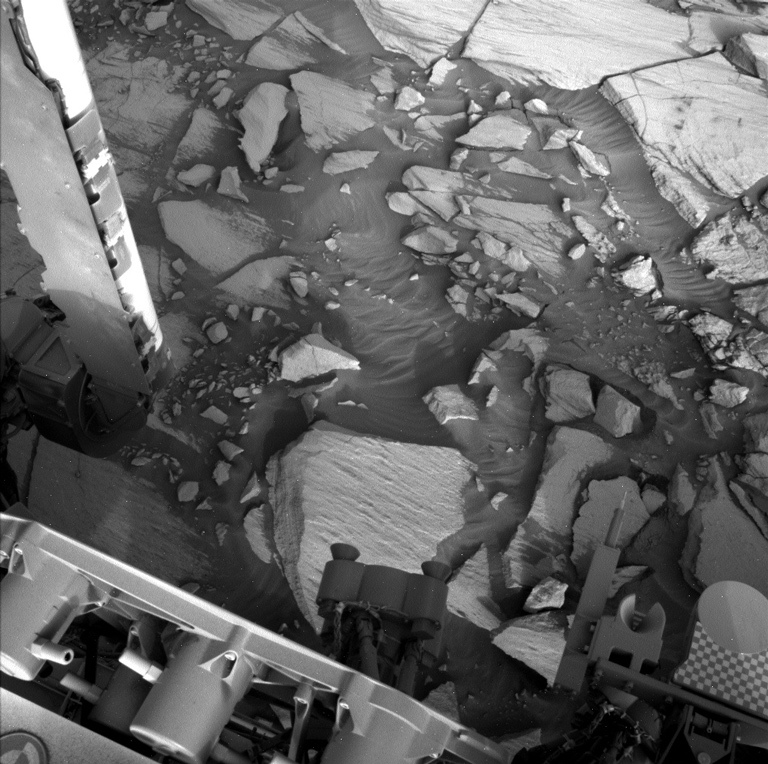2 min read

Following a drive away from our Edinburgh drill site on Wednesday, Curiosity has a brand-new parking spot for this weekend’s science activities. The drive put us right in front of a nice patch of sand ripples, visible smack dab in the middle of the Navcam image above. We’ll devote several of our weekend activities to investigating targets around this little patch of sand.
We have a "soliday" this weekend, which we have every few weeks to allow the Earth and Mars schedules to sync back up. That means our weekend plan is only two sols instead of the three.
On the first sol of the weekend, Sol 2731, we have a hefty 2-hour science block during which Curiosity will perform a suite of ChemCam, Mastcam, and Navcam observations. We’ll use the ChemCam laser to probe targets “The Borders,” “Dryhope,” and “Chalifornia.” The Borders and Chalifornia are bedrock targets, and, as the name suggests, Dryhope is a soil target. We’ll use Mastcam to take documentation images of the ChemCam targets as well as an additional large mosaic to document the stratigraphy of the Greenheugh pediment as we continue our drive down the pediment. To finish out the science block, we’ll use Navcam and Mastcam to search for dust devils and monitor the atmosphere. In the afternoon and overnight, we’ll perform contact science (including the MAHLI and APXS instruments) on the “Auld Reekie” soil target.
On the second sol, Sol 2732, Curiosity will wake up first thing in the morning to perform some additional atmospheric observations, including Mastcam tau and crater rim extinction images as well as a Navcam line-of-sight image and cloud-monitoring movies. After our observations we’ll take a series of MAHLI images of Curiosity’s wheels before getting back on the road to continue our drive down off the Greenheugh pediment. Following our drive, we’ll take our standard post-drive images.
Written by Rachel Kronyak, Planetary Geologist at NASA's Jet Propulsion Laboratory







